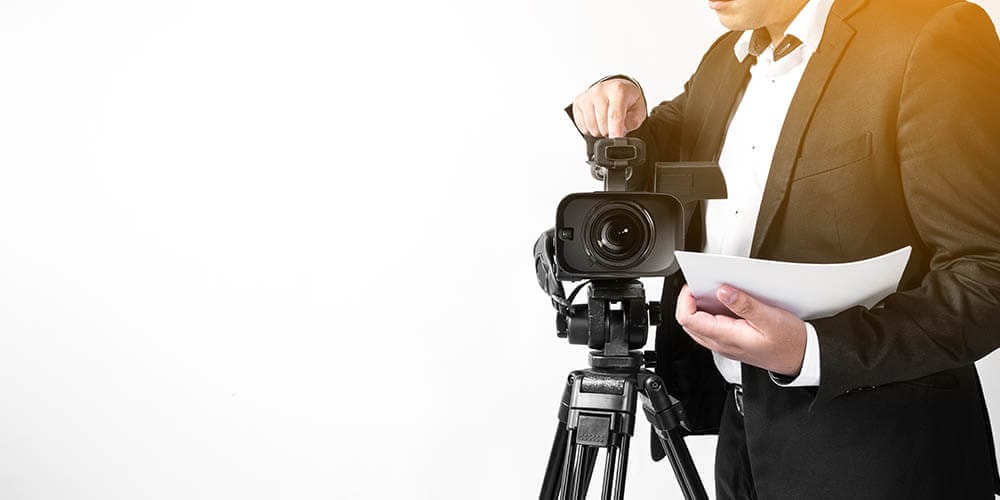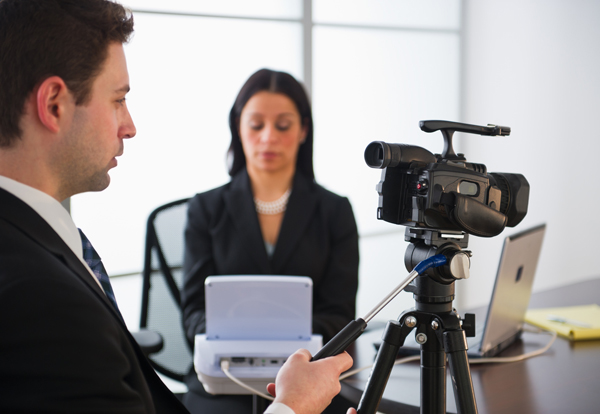Why Legal Videography Is Essential for Accurate Court Recordings
The function of legal videography in courtroom setups can not be overstated, as it acts as an important device for protecting the stability of court records. By recording both verbal and non-verbal communication, it boosts the clearness of witness testimonies and mirrors the nuances of court room interactions. This comprehensive documents not only help in minimizing potential misconceptions however also supports appellate reviews, thus enhancing the judicial process. The effects of integrating lawful videography right into typical court techniques increase vital questions concerning its broader effect on the lawful system. What might these implications require?
Significance of Visual Proof
In the world of lawful proceedings, the importance of aesthetic proof can not be overemphasized. Visual evidence acts as a powerful device in developing realities, corroborating testimonies, and improving the general quality of an instance. This kind of proof, that includes photographs, videos, and diagrams, can offer a concrete context that spoken summaries usually do not have, thereby providing juries and judges a clearer understanding of the situations surrounding a situation.
Furthermore, visual evidence aids in the retention of information. Human cognition is naturally aesthetic, and individuals are more probable to keep in mind and understand information presented in a visual format. In the court, this can be vital, as engaging visual evidence can sway point of views and enhance the story presented by lawful representatives.
Additionally, making use of visual evidence can minimize misunderstandings and obscurities that often emerge from spoken exchanges. By providing a straight representation of events, aesthetic proof assists to remove subjective interpretations and cultivates a much more objective evaluation of the facts. Subsequently, the combination of visual proof right into legal proceedings not just strengthens the honesty of the judicial procedure but additionally improves the possibility of achieving a just end result.
Capturing Non-Verbal Signs
Utilizing sophisticated videography strategies can dramatically boost the capture of non-verbal cues throughout legal process. Non-verbal communication, including faces, body language, and eye contact, plays a vital duty in sharing emotions and objectives that might not be explicitly specified in verbal testimony. legal videography. Lawful videography uses high-def cams and strategic angles to guarantee that these refined hints are tape-recorded with quality and accuracy
The ability to assess non-verbal actions can supply useful context to declarations made during court sessions. For instance, a witness's hesitation or self-confidence can be interpreted with their posture or gestures, possibly influencing the jury's assumption of trustworthiness. Additionally, using close-up shots can help concentrate on an audio speaker's expressions, permitting for an extra nuanced understanding of the testament.
Furthermore, incorporating several cam angles can develop a thorough sight of communications, highlighting characteristics in between celebrations included. This diverse method not only enhances the accuracy of the court document yet likewise aids in preserving the integrity of the judicial process - legal videography. Inevitably, recording non-verbal signs through lawful videography cultivates a richer, much more complete representation of court room process

Enhancing Testimony Integrity
The dependability of testimony can be dramatically reinforced via using top notch legal videography. Video recordings work as an objective tool that captures not only the talked words of witnesses but additionally the nuances of their distribution, including tone, pacing, and psychological expressiveness. This multifaceted paperwork provides a clearer understanding of the witness's trustworthiness and intentions, which can read here be critical in lawful proceedings.
In addition, legal videography lessens the possibility for misconceptions that might occur from composed records alone. When jurors can observe a witness's behavior and body movement along with their statement, they are much better equipped to examine the credibility and dependability of the proof offered. This visual context can reinforce the testimonial story, making it extra compelling and legitimate.
In addition, the presence of a video recording can prevent possible inconsistencies pop over to this site in statement. Witnesses might be extra cautious in their statements when they know they are being taped, bring about even more exact and truthful accounts. Generally, high-quality legal videography enhances the integrity of statement, making sure that the court has accessibility to a complete and honest depiction of the facts as communicated by the witnesses.
Sustaining Appeals and Reviews
Lawful videography plays a critical function in sustaining allures and reviews by offering an extensive visual record of courtroom process. This aesthetic documents catches not only the spoken words of witnesses and attorneys but also the subtleties of body movement, intonation, and court dynamics. Such components can be crucial in recognizing the context of testaments and disagreements presented.
In the appellate procedure, where the emphasis is on errors of regulation and step-by-step fairness, a video document can work as an important tool for appellate courts. It makes it possible for courts to evaluate the original test context, making sure that decisions are based on a full understanding of the process. The capability to visually assess the disposition of witnesses or the communications between events can expose insights that written records may overlook.

Additionally, legal videography can help in clarifying obscurities in testimonies or step-by-step rulings, consequently strengthening the basis for an allure. By providing a dependable, unbiased account of what transpired in court, lawful videography not just supports the stability of the lawful process yet also equips all events included to make educated decisions concerning their situations.
Streamlining Court Room Processes
Enhancing court site performance, lawful videography streamlines processes by supplying instant accessibility to aesthetic documents of proceedings. This modern technology allows judges, lawyers, and courts to take another look at critical testimony and evidence, guaranteeing that all celebrations have a clear understanding of the situation. By recording the subtleties of spoken and non-verbal interaction, videography improves the document, making it less complicated to grasp the context and weight of testimonies.

Furthermore, video clip recordings can assist in remote involvement in hearings, permitting higher flexibility in organizing and participation, which is specifically important in intricate situations involving several stakeholders.
Conclusion
In verdict, legal videography plays an essential function in making sure accurate court recordings by providing essential visual proof that captures both spoken and non-verbal interaction. This method boosts the reliability of testaments, supports appellate evaluations, and simplifies courtroom procedures. By cultivating an extensive understanding of court room dynamics, legal videography inevitably adds to a lot more fair judicial outcomes, strengthening the honesty of the legal system and helping with educated decision-making.